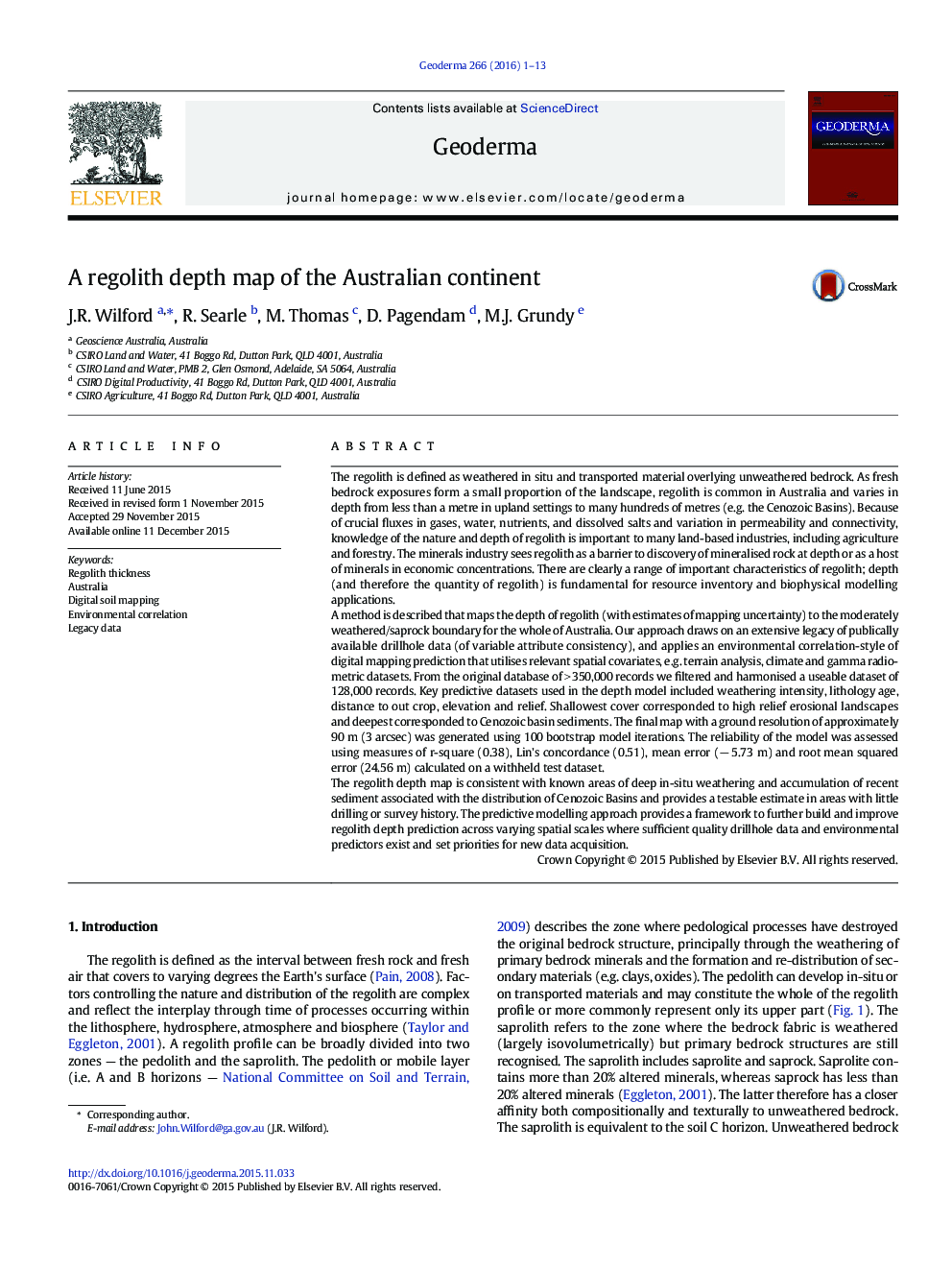| کد مقاله | کد نشریه | سال انتشار | مقاله انگلیسی | نسخه تمام متن |
|---|---|---|---|---|
| 6408349 | 1629451 | 2016 | 13 صفحه PDF | دانلود رایگان |
- Regolith depth modelled with associated uncertainties from environmental datasets.
- Provides insights into processes controlling regolith depth across the Australian landscape
- Depth prediction compared to our existing knowledge of the nature of the regolith cover.
- The approach has broad application in biophysical modelling and mineral exploration.
The regolith is defined as weathered in situ and transported material overlying unweathered bedrock. As fresh bedrock exposures form a small proportion of the landscape, regolith is common in Australia and varies in depth from less than a metre in upland settings to many hundreds of metres (e.g. the Cenozoic Basins). Because of crucial fluxes in gases, water, nutrients, and dissolved salts and variation in permeability and connectivity, knowledge of the nature and depth of regolith is important to many land-based industries, including agriculture and forestry. The minerals industry sees regolith as a barrier to discovery of mineralised rock at depth or as a host of minerals in economic concentrations. There are clearly a range of important characteristics of regolith; depth (and therefore the quantity of regolith) is fundamental for resource inventory and biophysical modelling applications.A method is described that maps the depth of regolith (with estimates of mapping uncertainty) to the moderately weathered/saprock boundary for the whole of Australia. Our approach draws on an extensive legacy of publically available drillhole data (of variable attribute consistency), and applies an environmental correlation-style of digital mapping prediction that utilises relevant spatial covariates, e.g. terrain analysis, climate and gamma radiometric datasets. From the original database of > 350,000 records we filtered and harmonised a useable dataset of 128,000 records. Key predictive datasets used in the depth model included weathering intensity, lithology age, distance to out crop, elevation and relief. Shallowest cover corresponded to high relief erosional landscapes and deepest corresponded to Cenozoic basin sediments. The final map with a ground resolution of approximately 90 m (3 arcsec) was generated using 100 bootstrap model iterations. The reliability of the model was assessed using measures of r-square (0.38), Lin's concordance (0.51), mean error (â 5.73 m) and root mean squared error (24.56 m) calculated on a withheld test dataset.The regolith depth map is consistent with known areas of deep in-situ weathering and accumulation of recent sediment associated with the distribution of Cenozoic Basins and provides a testable estimate in areas with little drilling or survey history. The predictive modelling approach provides a framework to further build and improve regolith depth prediction across varying spatial scales where sufficient quality drillhole data and environmental predictors exist and set priorities for new data acquisition.
Journal: Geoderma - Volume 266, 15 March 2016, Pages 1-13
